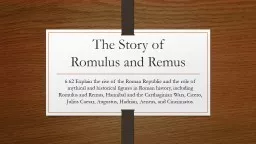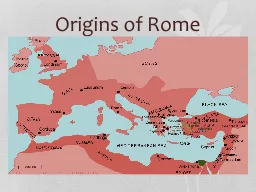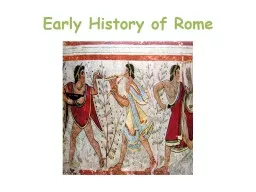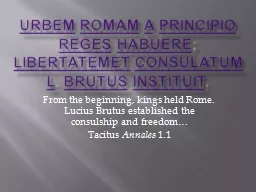PPT-The Story of Romulus and Remus
Author : luanne-stotts | Published Date : 2018-11-03
662 Explain the rise of the Roman Republic and the role of mythical and historical figures in Roman history including Romulus and Remus Hannibal and the Carthaginian
Presentation Embed Code
Download Presentation
Download Presentation The PPT/PDF document "The Story of Romulus and Remus" is the property of its rightful owner. Permission is granted to download and print the materials on this website for personal, non-commercial use only, and to display it on your personal computer provided you do not modify the materials and that you retain all copyright notices contained in the materials. By downloading content from our website, you accept the terms of this agreement.
The Story of Romulus and Remus: Transcript
Download Rules Of Document
"The Story of Romulus and Remus"The content belongs to its owner. You may download and print it for personal use, without modification, and keep all copyright notices. By downloading, you agree to these terms.
Related Documents














